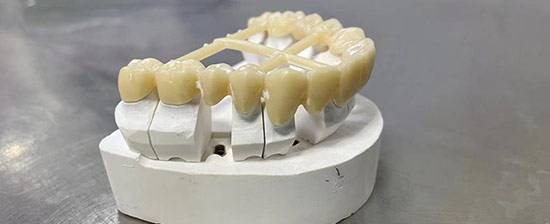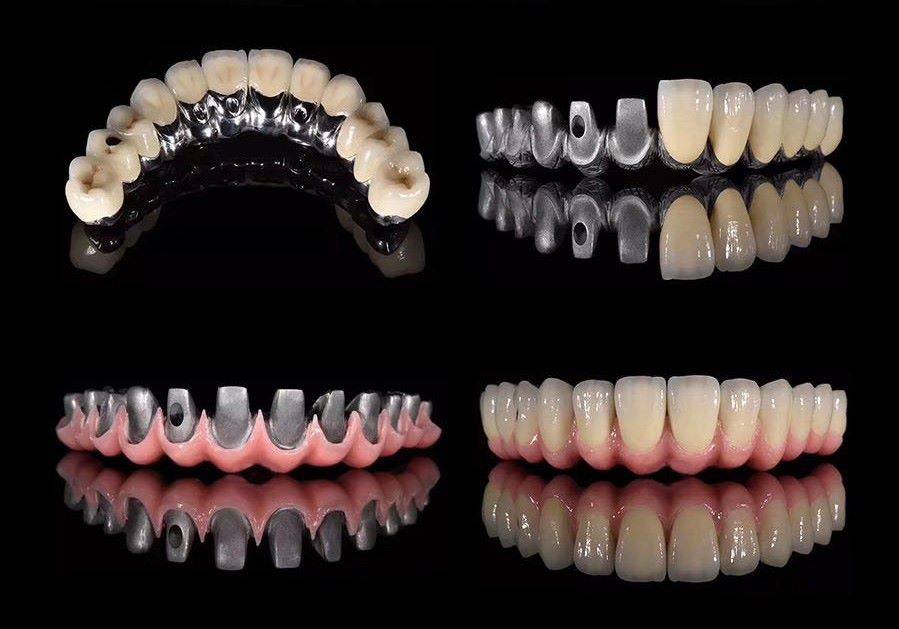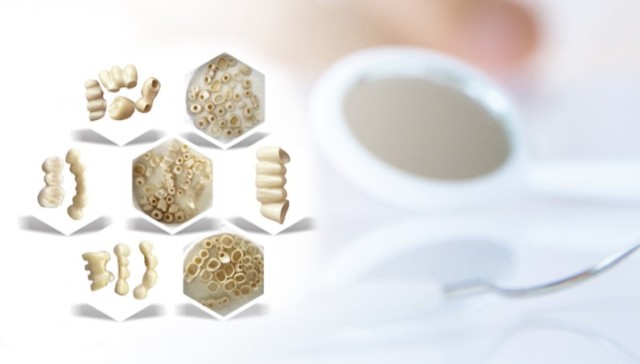Color Variations After Sintering
Dark Color After Sintering
A lower maximum sintering temperature can lead to a darker shade in the final product, specifically the dental crown. This phenomenon occurs because the material does not reach the necessary temperature to achieve the desired color consistency. To mitigate this issue, it is crucial to accurately calibrate and adjust the maximum sintering temperature.
Proper temperature management is essential. If the temperature is too low, the material may not sinter adequately, resulting in a darker crown. This can be particularly problematic in aesthetic dentistry where the color match is critical. Adjusting the sintering temperature to the correct level ensures that the material undergoes the appropriate chemical and physical changes, leading to a more uniform and desirable color.
Moreover, maintaining a stable sintering environment is equally important. Fluctuations in temperature, even minor ones, can significantly impact the final color of the denture. Using stabilizers and ensuring a consistent power supply can help maintain the set temperature, thereby preventing the occurrence of darker shades.
In summary, the key to avoiding a dark-colored crown post-sintering lies in precise temperature control and maintaining a stable sintering environment.
Light Color After Sintering
A high maximum sintering temperature can result in a light-colored crown. To avoid this, it is crucial to precisely calibrate the maximum sintering temperature. Additionally, post-glazing treatments, if performed multiple times, can also contribute to a lighter shade. Therefore, it is advisable to limit the frequency of glazing procedures to maintain the desired color intensity.
To summarize, controlling the sintering temperature and minimizing the number of post-glazing treatments are key strategies to prevent the development of light-colored crowns.

Undercooked or Overcooked Dentures
Undercooked Dentures
Undercooked dentures occur when the actual sintering temperature falls short of the preset maximum temperature. This discrepancy can be attributed to several factors, including improper calibration of the sintering temperature and voltage instability.
To address these issues, it is crucial to calibrate the sintering temperature accurately. This ensures that the furnace reaches the intended maximum temperature, thereby preventing undercooking. Additionally, voltage instability can lead to fluctuations in the sintering temperature, which may prevent the furnace from reaching the set maximum.
Using a stabilizer to maintain voltage stability is essential. This helps in achieving and maintaining the set temperature, thereby ensuring that the dentures are sintered properly. Ensuring a stable voltage not only aids in reaching the desired sintering temperature but also maintains it consistently throughout the process.
In summary, accurate temperature calibration and voltage stabilization are key to preventing undercooked dentures. These measures ensure that the sintering process is conducted at the optimal temperature, resulting in high-quality dentures.
Overcooked Dentures
Overcooked dentures are a common issue in dental furnace sintered denture procedures, often resulting from an excessively high sintering temperature. This phenomenon can lead to several undesirable outcomes, such as structural weakening, color alterations, and an overall compromised quality of the denture.
To address this issue, it is crucial to adjust the sintering curve correctly. This involves calibrating the furnace to ensure that the temperature does not exceed the optimal range for the specific materials being used. Additionally, maintaining a stable voltage is essential to prevent fluctuations that could inadvertently raise the sintering temperature beyond the desired level.
| Symptom | Cause | Solution |
|---|---|---|
| Structural weakening | High sintering temperature | Adjust sintering curve to maintain optimal temperature |
| Color alterations | Overcooking | Ensure stable voltage and correct sintering temperature |
| Compromised quality | Excessive heat | Regular maintenance and calibration of furnace settings |
By meticulously managing the sintering process, dental professionals can prevent overcooked dentures and ensure the production of high-quality, durable restorations.

Denture with Black Spots
Cause and Solution
Contaminated restorations before sintering or contaminated hearths are primary culprits behind the appearance of black spots on dentures post-sintering. These contaminants often include residual debris, oils, or other impurities that inadvertently find their way onto the denture surface or the hearth. The presence of these contaminants can lead to uneven sintering, resulting in unsightly black spots that compromise the aesthetic and functional integrity of the denture.
To mitigate this issue, operators must adopt rigorous cleaning protocols. Before initiating the sintering process, it is imperative to thoroughly clean the denture to remove any surface contaminants. This can be achieved using appropriate cleaning agents and techniques that are specifically designed for dental restorations. Additionally, regular maintenance and cleaning of the hearths are crucial. This involves removing any accumulated debris and ensuring that the hearth surfaces are free from contaminants that could transfer onto the dentures during the sintering process.
Implementing these preventive measures can significantly reduce the incidence of black spots on dentures, ensuring a higher quality and more aesthetically pleasing final product.
Precautions During Sintering
Proper Placement and Handling
When preparing for the sintering process, it is crucial to place the sintering disk with the neck facing upwards. This orientation ensures optimal heat distribution and minimizes the risk of deformation or damage to the restoration. Additionally, the restoration should be positioned in such a way that it does not come into contact with the walls of the sintering tray. This precaution prevents any potential contamination or uneven heating that could affect the final product.
To prevent cross-contamination and ensure even sintering, it is essential to maintain a separation of at least 2mm between individual restorations. This spacing allows for adequate airflow and heat circulation, which are critical for achieving a uniform and high-quality result.
Once the sintering process is complete, it is imperative to wait until the furnace temperature has dropped below 500 degrees before removing the dentures. This cooling period allows the materials to stabilize and reduces the risk of thermal shock, which could lead to cracking or other structural issues.
Finally, maintaining the cleanliness of the furnace chamber is non-negotiable. Regular cleaning helps to prevent the accumulation of debris and contaminants that could adversely affect the quality of the sintered dentures. By adhering to these guidelines, dental professionals can ensure that their sintering procedures yield the best possible results.
Related Products
- Vacuum Dental Porcelain Sintering Furnace
- Dental Porcelain Zirconia Sintering Ceramic Furnace Chairside with Transformer
- Dental Porcelain Zirconia Sintering Ceramic Vacuum Press Furnace
- Vacuum Heat Treat and Pressure Sintering Furnace for High Temperature Applications
- High Temperature Muffle Oven Furnace for Laboratory Debinding and Pre Sintering















